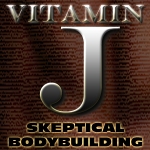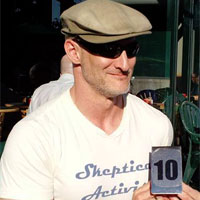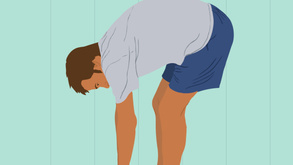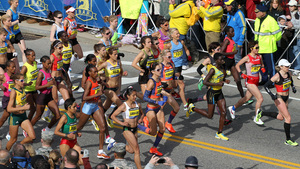By Jay Diamond
I have bad news. You’ll probably never be a professional contortionist.
 I laugh when I see good skeptics selectively choose to pick apart sci-fi or fantasy movies while giving a “pass” to other works in the genre for which they have fondness. The issues cited are normally silly, fallible humans doing silly, fallible things or simply bad science, but the beloved films are similarly flawed (Harry Potter, Star Wars, and Star Trek come to mind). In the right context, suspension of disbelief is healthy and fun.
I laugh when I see good skeptics selectively choose to pick apart sci-fi or fantasy movies while giving a “pass” to other works in the genre for which they have fondness. The issues cited are normally silly, fallible humans doing silly, fallible things or simply bad science, but the beloved films are similarly flawed (Harry Potter, Star Wars, and Star Trek come to mind). In the right context, suspension of disbelief is healthy and fun.
Unfortunately silly, fallible humans also love to suspend disbelief outside of the movies – in real life, without realizing that they are doing it. Wouldn’t it be great if you were actually gaining benefit from the things you thought were giving you benefit? What a concept…
In my youth, I ran track & field (I was terrible) and was a diver (less terrible, but still bad), learning all kinds of great warm-ups, which I practiced well into my adult life. The warm-up is a source of great confusion, a lot of ritual, and even more superstition and pseudoscience.
I was the poster-boy for warm-up self-delusion.
The warm-up was all about stretching, more specifically static stretching, and that method was taught and used by generations of athletes. When I started working out 5 years ago, I couldn’t touch my toes. Not even close. Embarking on a path of methodical self-improvement, I started the static stretching routines from my youth, which involved sitting on a mat and reaching as far as I could for my toes. And I was getting better. After 6 months of doing this every day I could touch my toes. Clearly projecting forward, in 5 years I’d be a professional contortionist.
Except that I’m not a contortionist today (at least not a professional).
I plateaued at reaching my feet… it became less painful to stretch, but I’d clearly reached some kind of physical limitation. But that was my warm-up, so I kept doing it… for years, thinking that I was improving my flexibility, reducing the chance of injury. Then science told me that I was deluding myself.
I’m often asked about warming up – what to do and when to do it. I’ve had people authoritatively tell me to stretch before the workout to prevent injury. I’ve heard people authoritatively tell me that stretching after your workout is optimal because it “seals in” all your hard work. I’ve had people authoritatively tell me both. And it’s all wrong.
All of this started with the assumption that limber = good.
This seems reasonable, but is it true? In fact, the research says that less limber runners are generally faster… and studies show that static stretching actually reduces power and efficiency (as much as 30%). It also doesn’t seem to help injuries (from large-scale studies on military recruits).
That’s not to say that you should be a sloth… there’s definitely an advantage to having enough flexibility. There’s a great variance in people’s flexibility, much of which is determined by genetics. Very flexible for one person may not be for another, and static stretching will definitely get you from nothing to enough. Beyond that, it appears that you’re actually conditioning your tolerance for discomfort to accept more pain in stretching rather than actually conditioning the muscles and tendons to stretch farther.
So what should I do and when?
Dynamic stretching, or doing a light version (or a simplified derivative) of the exercise that you’re about to perform seems to have the best results, and today that’s the regimen for elite athletes. This does 2 important things: increases your range of motion by loosening muscles & tendons, and primes the cardiovascular system with increased blood flow and body heat.
Even better, there is growing evidence that dynamic stretching reduces injury… which was my youthful but erroneous expectation of static stretching. These are all motivating reasons that most high-level athletic organizations now encourage active stretching prior to exercise – across most activities.
So a light jog before a hard run, some squats and lunges before tennis, a few spider-walks before curling should be enough to get the body primed for exercise.
The bad news is that you’ll probably never be a professional contortionist.
____________________________________________________________________________________________
 Jay Diamond writes the VitaminJ blog on evidence-based fitness & bodybuilding. Jay is the founder of Reason4Reason – a skeptical activist group based in the San Francisco bay area. He holds dual masters degrees in engineering and business and has managed both startup companies and hundred-million-dollar programs for Fortune 50 companies. Growing up in Canada, he performed magic, studied science, and became aware of the skeptical movement. Jay has lectured around the world on science & technology, business, and skepticism.
Jay Diamond writes the VitaminJ blog on evidence-based fitness & bodybuilding. Jay is the founder of Reason4Reason – a skeptical activist group based in the San Francisco bay area. He holds dual masters degrees in engineering and business and has managed both startup companies and hundred-million-dollar programs for Fortune 50 companies. Growing up in Canada, he performed magic, studied science, and became aware of the skeptical movement. Jay has lectured around the world on science & technology, business, and skepticism.


